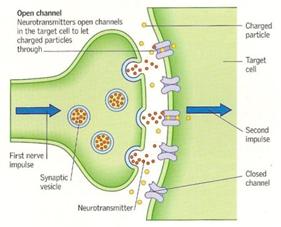Iron is an “essential mineral” for humans; this means it is an element that our bodies cannot manufacture independently, and therefore, must be obtained through an external source. The sad fact of the matter is that many individuals (approximately two-billion people world wide) do not consume an adequate amount of iron, leaving them iron deficient, which can have many adverse effects on our bodies.

Image Source: http://www.medicinenet.com/hemoglobin/article.htm
Why is iron so important to us? Iron is essential to the circulatory system as it is a main component of hemoglobin (a compound responsible for binding to oxygen and carbon dioxide) within our red blood cells. Iron deficiency is responsible for nearly 20% of all maternal deaths during pregnancy. Mothers with low iron status can be heavily effected by the loss of blood during labour. As blood is lost, individuals already low in iron will drop to more alarming levels, resulting in an inability to provide their bodies with enough oxygen. Their hearts will begin to pump harder, eventually resulting in cardiac arrest, and subsequent death.
This begs a the question, how much iron does an individual need? The answer varies from person-to-person depending on body composition and lifestyle, however, the average male should be consuming roughly 8 mg of iron daily, and the average woman should be consuming nearly 18 mg per day. The drastic difference between men and women is due to the fact that women loose a large portion of their iron stores as they progress through their monthly menstrual cycle, forcing women to consume larger volumes of iron to compensate for their losses.
If we cant make iron ourselves, where do we get it from? Iron can either be obtained from the food we eat, or through supplementation. The iron in our diets is termed “dietary iron”, and there are two types: “heme Iron,” and “non-heme iron.”

Image source: Michael Collan, inSlideShare
Heme-iron is exclusively obtained through a carnivorous diet, in particular, it is found within the meat’s blood (attached to hemoglobin), and the meat’s muscle (attached to myoglobin). This type of iron is more bioavailable, meaning it is better absorbed through the gastro-intestinal tract into the blood stream. Non-heme iron is found in both animal tissue (representing 60% of the iron present), and is the only type of iron found in plant tissue (100%). This type of iron is comparatively less bioavailable. The implication here is that those who have a herbivorous diet must consume 1.8 times the amount dietary iron (as less of the iron they consume is appropriately absorbed through the GI tract into the bloodstream.) This further implies that vegetarians are more susceptible to iron deficiency.

Pale Conjunctiva Image Source: http://geekymedics.com/respiratory-examination-2/

Ferritin, Image Source: Rachel Casiday
How do we know if individuals are deficient in iron stores? One practical method is to track your dietary intake and calculate your iron consumption. However, a more reliable and specific mode of detection is through measuring “serum ferritin” concentrations within the blood. This is a protein that stores iron, and therefore, low levels of serum ferritin are indicative of iron deficiency. Clinically, the presence of pale conjunctiva of the eyes, or pale red inner lip colour can indicate low iron stores. The symptoms of iron deficiency are not obvious, and often go unnoticed, leading to many deaths that could have been easily avoided.
Ali Lamont




